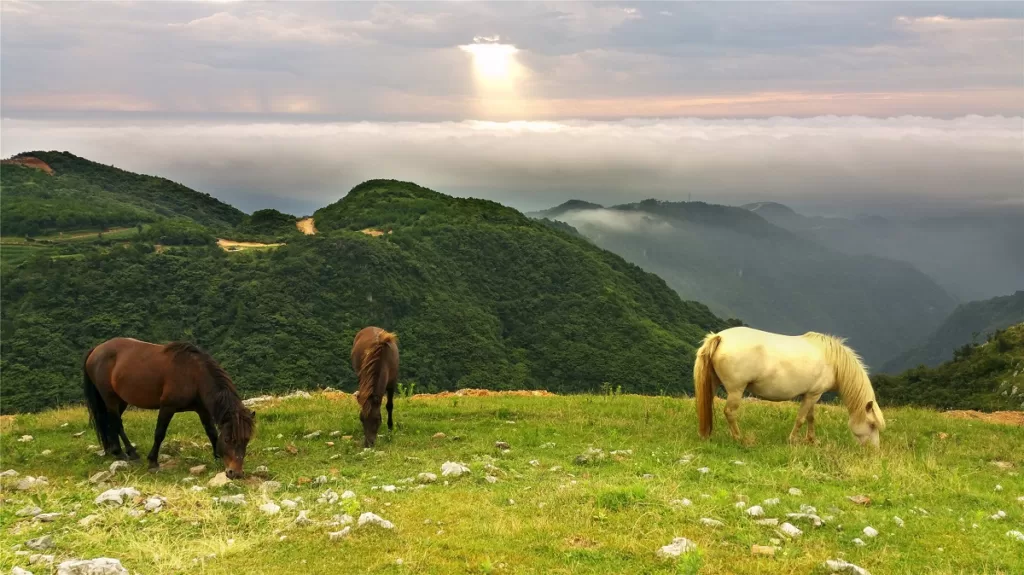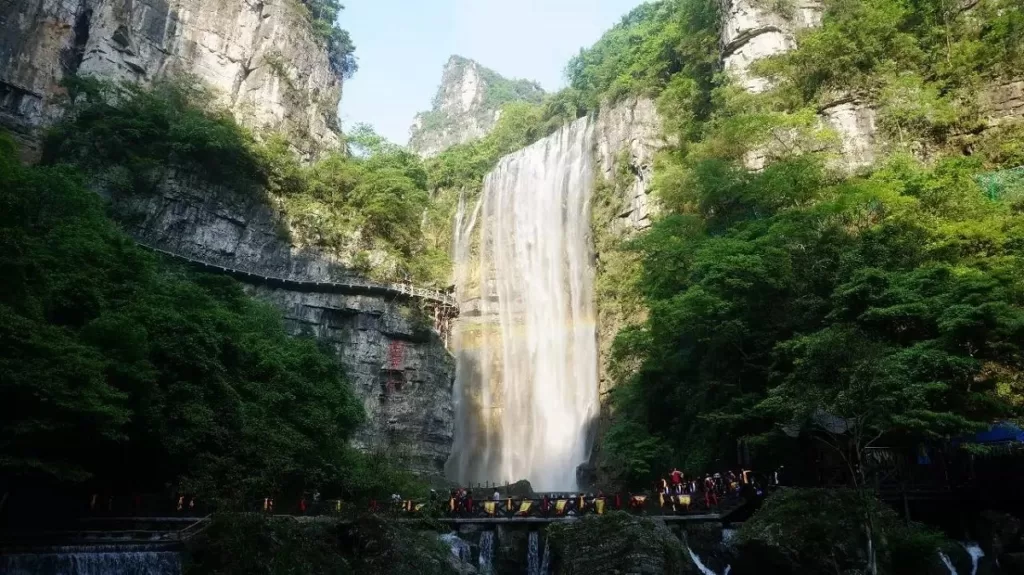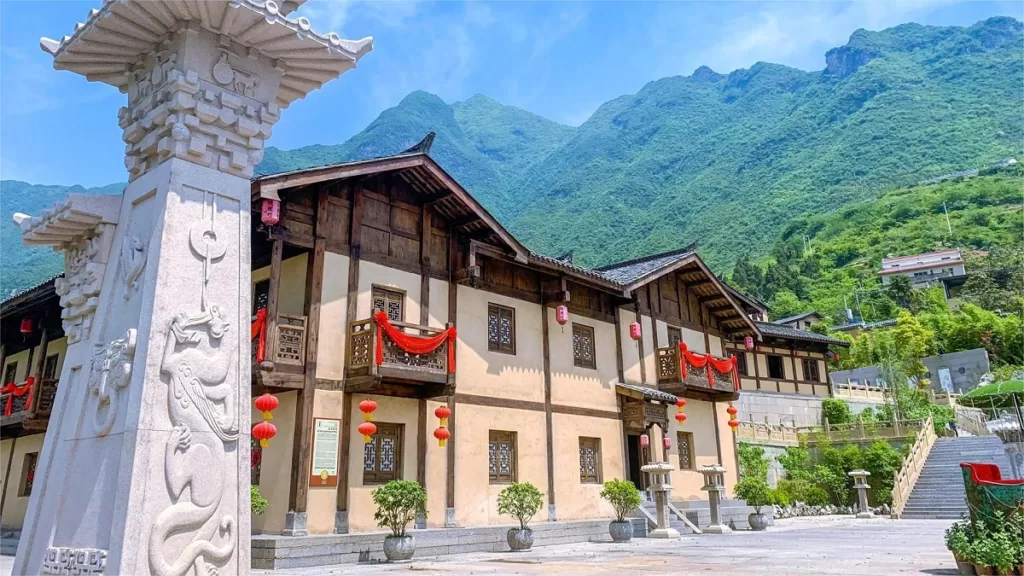Chexi Folk Custom Scenic Area (车溪民俗风景区), situated near the renowned Three Gorges in the southern town of Tucheng in Yichang, is named after its abundance of water wheels (“che” means waterwheel in Chinese). Chexi holds historical significance as the cradle of ancient Ba culture and the birthplace of Chu culture. This locale is not only the hometown of the great patriotic poet Qu Yuan but also of Wang Zhaojun, one of China’s four beauties.
The scenic area predominantly features pastoral landscapes and Tujia ethnic customs. It boasts China’s first waterwheel museum, the country’s inaugural farmhouse museum, and the largest ancient workshop exhibition area nationwide. Each museum and workshop area offers dynamic displays, allowing visitors to intimately engage with and appreciate the lifestyles of our ancestors. Chexi Folk Custom Scenic Area provides a tranquil escape from the hustle and bustle of urban life, offering a serene environment to forget the worries of daily work. It’s a haven where visitors can immerse themselves in the beauty of rural landscapes and the rich cultural heritage of the Tujia people.
Table of Contents
- Basic Information
- Location and Transportation
- Highlights of Chexi Folk Custom Scenic Area
- Vlog about Chexi Folk Custom Scenic Area
- Other Attractions in Yichang Suburbs
Basic Information
| Estimated Length of Tour | Half a day |
| Ticket Price | 90 RMB |
| Opening Hours | 9.00 – 21.00 |
| Telephone Number | 0086-0717-7884167 |
Location and Transportation
Chexi Folk Custom Scenic Area is situated in the Tucheng Township of Dianjun District, approximately 18 kilometers away from the central urban area of Yichang City in Hubei Province, China. To get there from Yichang, tourists can take an express coach at Yiling Square (夷陵广场).
Highlights of Chexi Folk Custom Scenic Area
Lamei Gorge (Plum Blossom Gorge)

Stretching over 3 kilometers, Lamei Gorge is a picturesque marvel featuring a tranquil valley, crystal-clear springs, and an abundance of plum blossoms along both banks. The fragrance of a millennium-old cinnamon tree at the gorge’s entrance mingles with the vibrant display of thousands of plum blossoms across the valley, creating a scene of poetic beauty. Even in the harsh winter of the twelfth lunar month, the valley is filled with the sweet scent of plum blossoms, evoking a sense of picturesque charm.
Bachu Native Culture Garden

The Bachu Native Culture Garden serves as a condensed representation of the traditional customs of the Bachu people. Through engaging demonstrations of ancient agricultural practices like spinning, weaving, waterwheel operation, pounding cloth, and paper-making, visitors are transported back in time to experience the simplicity and authenticity of bygone rural life. The vibrant and diverse performances of farm activities provide an immersive opportunity for visitors to step into workshops such as weaving, oil pressing, papermaking, and tofu production, allowing them to personally feel the rhythmic charm of the Bachu ancestors’ labor.
Forget-worry Valley

Nestled at the western end of Chexi Gorge, Forget-worry Valley features the Taigong Cave, where underground springs flow year-round. Standing at the cave entrance, visitors experience a unique climate – cool in summer and warm in winter. The valley culminates in the stunning Pearl Waterfall, where cascading water resembles scattered pearls, especially during the rainy season. The surrounding cliffs reach skyward, adding to the breathtaking natural scenery of the valley.







